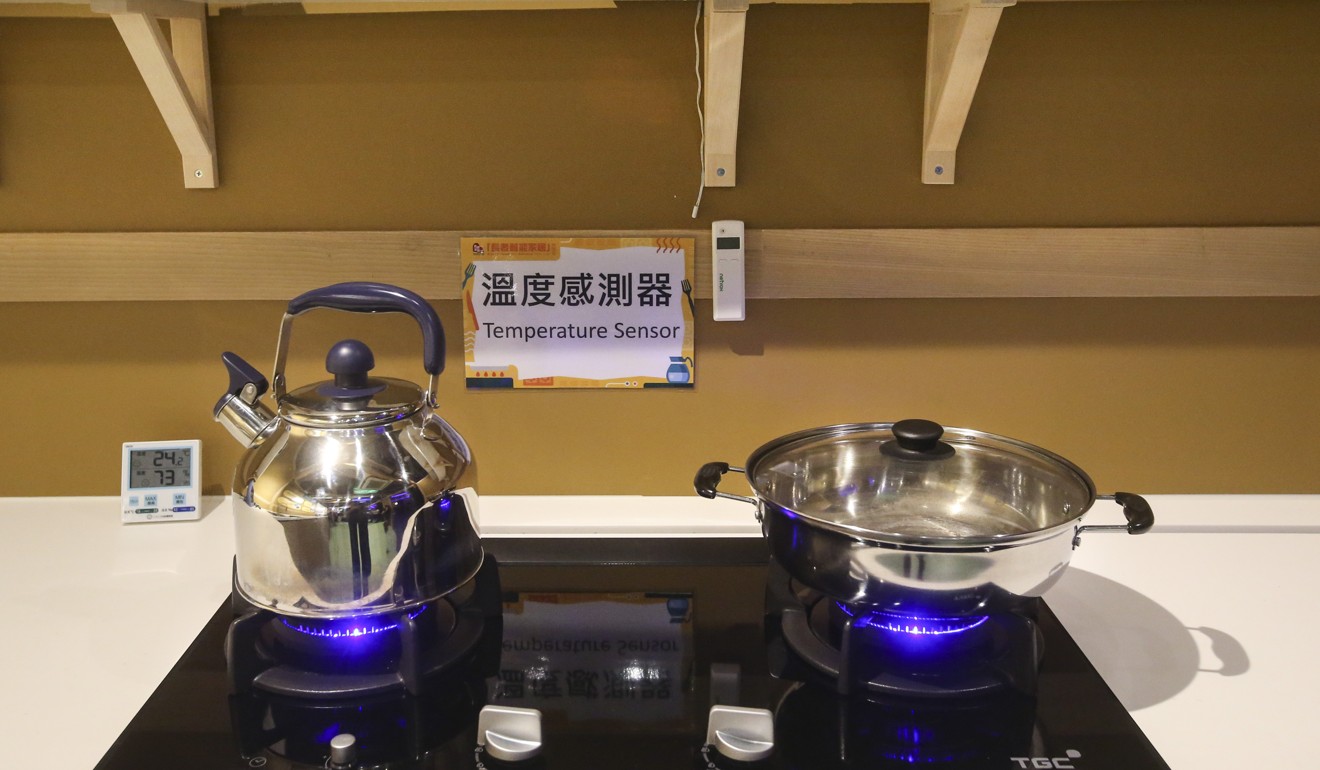
Are smart homes with sensor technology the answer to Hong Kong’s ageing population problem?
Association will run pilot programme in the homes of 1,000 senior citizens, and hopes to bring innovation to masses by 2020
Smart homes with sensor technology linked to round-the-clock emergency call centres could prevent major accidents for the elderly, as the city ages and grapples with an overwhelmed public hospital sector.
The Senior Citizen Home Safety Association, a social enterprise offering 24-hour emergency services for the elderly, is launching a two-year pilot scheme. Under the plan, the homes of 1,000 senior citizens will be installed with sensory devices by the end of the year.
The HK$22 million project sponsored by HSBC, features a show flat at the association headquarters in Ho Man Tin with smart devices connected to a 24-hour call centre.

The show flat demonstrates how a home installed with motion and voice-activated sensors could make a difference in providing timely help for the elderly. Sensors can detect fire or smoke in an overheated kitchen and flooding in the bathroom, as well as monitor blood pressure levels.
When activated, the devices prompt a call from the association to check on the elderly occupant, a caregiver or building management. As a last resort in case all calls are unanswered, the police will be notified.
Ho Yuk-ling, who is in her late 50s, said temperature and motion sensors in the kitchen would be the most useful features.
“You know we have a tendency to forget things all the time. I think I’ve forgotten to turn off the fire on the stove more than 10 times. One time, I tried to warm up a cup of drink that had gone cold and the whole thing melted because I fell asleep on the sofa,” Ho said.
Since 1996, the association has been operating widely used hand-held devices that allow the elderly to seek help from a call centre with the push of a button.
“Our hand-held devices do a great job when the elderly need to call us for help, but that is all passive,” association CEO Irene Leung Shuk-yee said. “We wanted to see if we could use technology to actively inform us of any situation and provide help [as early as possible].”
Half of the trial participants will come from public rental flats and subsidised flats, while the other half will be from private flats.

Priority will be given to senior citizens aged 50 and above who live alone, elderly couples and those who live with their caretakers.
Leung hopes that the association will be able to bring the technology to the general public by 2020.
Accident-proof homes will play an increasing role in elderly care as Hong Kong comes to terms with a rapidly ageing society.
In just two decades, the percentage of residents aged 65 or above rose from 10.3 per cent of the population in 1997 to 16 per cent last year. By 2041, it is projected that almost one in three Hongkongers will be aged 65 or above.
Injuries from falls are also one of the most common issues facing the elderly. These accounted for some 12 per cent of all help requests from the association’s call centre in the past 12 months, Leung said.
According to the Department of Health and the Census and Statistics Department, in 2015 there were a total of 255 deaths for those aged 65 or above due to injuries from falls, with 44 per cent having occurred at home.
Paul Yip Siu-fai, chair professor of population health in the department of social work and social administration at the University of Hong Kong, said the services would offer a safer home environment for the elderly, especially those who were single.
“Currently there are about 20 per cent of people aged 40 to 50 [in the population] that are unmarried,” Yip said. “They will eventually be living alone as they grow older and can benefit from these services the most.”

